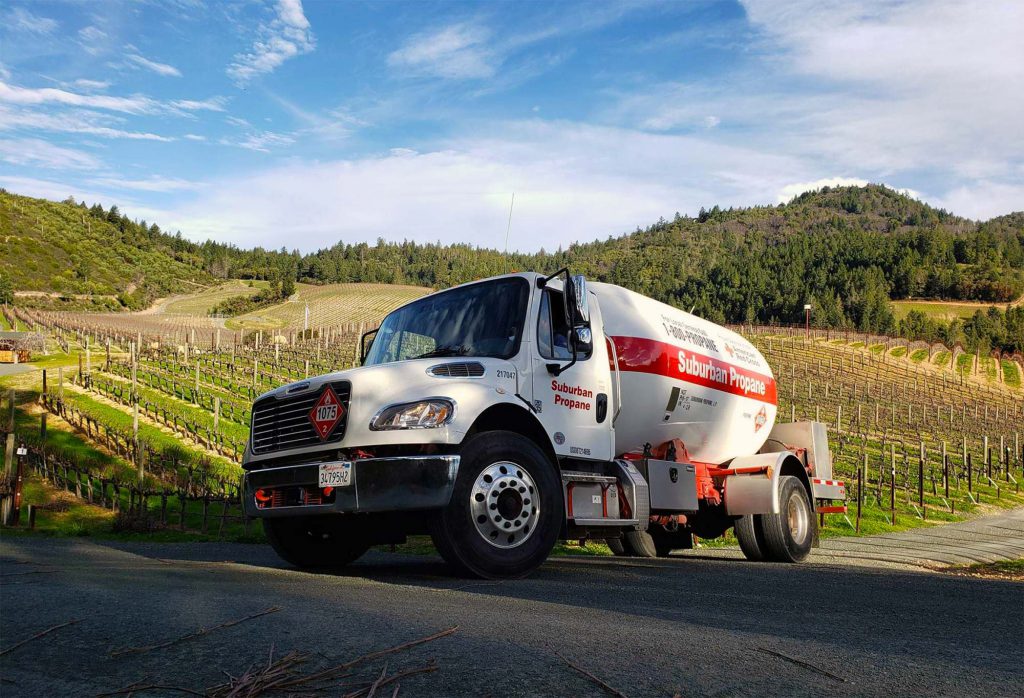Frequently Asked Questions
- What can I do to conserve energy costs?
Here are some “Energy Saving Tips.” For additional tips you may want to visit the Home Energy Saver website.
- Do propane prices change?Propane prices respond quickly to any situation that might affect supply and demand. Some examples are unexpectedly cold or warm weather, supply interruptions or excess production. These changes may be reflected in the wholesale price we pay for the propane that we deliver to you, and consequently, in the prices you pay for such propane.
- Where can I find an explanation of the fees and charges that appear on my bill?
Fees and charges vary by location and region in the country. A description of the various fees that may appear on your bill can be found here.
- Why isn't my tank filled 100 percent capacity?Your propane is delivered and stored in liquid form. Propane liquid, for example, will expand (become a gas) nearly 17 times more than water over the same temperature increase. As a result, tanks and cylinders are never completely filled with propane liquid. Tanks are filled to about 80 to 85 percent of their capacity. This leaves a space above the liquid, which allows the propane liquid to expand freely due to changes in temperature. Heat is added to or taken from propane stored in a tank or cylinder by transfer directly to or from the air surrounding the container. Hot days, cool nights, rain and snow are a few of the many factors that affect the temperature of the liquid. Because of these ambient temperature changes, you may see fluctuations in your container gauge.
- Is propane an environmentally friendly fuel?
Propane, one of the cleanest burning fuels available, is the clear choice for our environment. Propane burns cleaner than gasoline and other fossil fuels. It emits lower levels of carbon dioxide and particulates and doesn’t produce sulfur dioxide, a primary cause of the greenhouse effect. Propane is non-toxic and vaporizes quickly, so it won’t contaminate soil or groundwater. Propane is also a natural by-product of the crude oil or natural gas refining process and is in plentiful supply – there’s enough propane to meet America’s needs in the 21st century. Most of the propane used in the United States is produced right here. All these factors make propane one of the most versatile fuels you can find. Learn more about propane and the environment.
- How can I convert gallons to cubic feet?This conversion may vary depending on altitude, temperature and meter type. Please check with your Suburban customer service center to get the correct conversion formula.
- How do I read the guage on my propane tank?
Not all tanks have gauges. If your tank does have a gauge, it is located on the top of the tank, usually under a liftable hood. (Note: Please be careful when you lift the hood—insects sometimes nest there.) For your convenience and comfort, please call your local Suburban Propane customer service center if your gauge reading measures 20 percent or less. If you don’t have a gauge on your tank, or if you have questions, please call us. You may also want to consider our Automatic Delivery service. As an Automatic Delivery customer you never have to worry about checking the level of propane in your tank, calling for a delivery or running out of fuel. We deliver based on your household needs and local weather patterns to make sure there’s always enough fuel in your tank.
Peace of mind
with dependable
fuel supply, when
you need it

COMMUNITY
700+
Locations providing exceptional service to local communities across 42 states
EXPERIENCE
95+
Years serving our customers and their communities. Customer satisfaction since 1928
CUSTOMER SERVICE
3,300+
Dedicated employees ready to assist you with quality service for all your fuel needs
RELIABILITY
24/7/365
We are here for you with customer service representatives standing by to take your call
Please call us 24/7/365 at 1-800-PROPANE